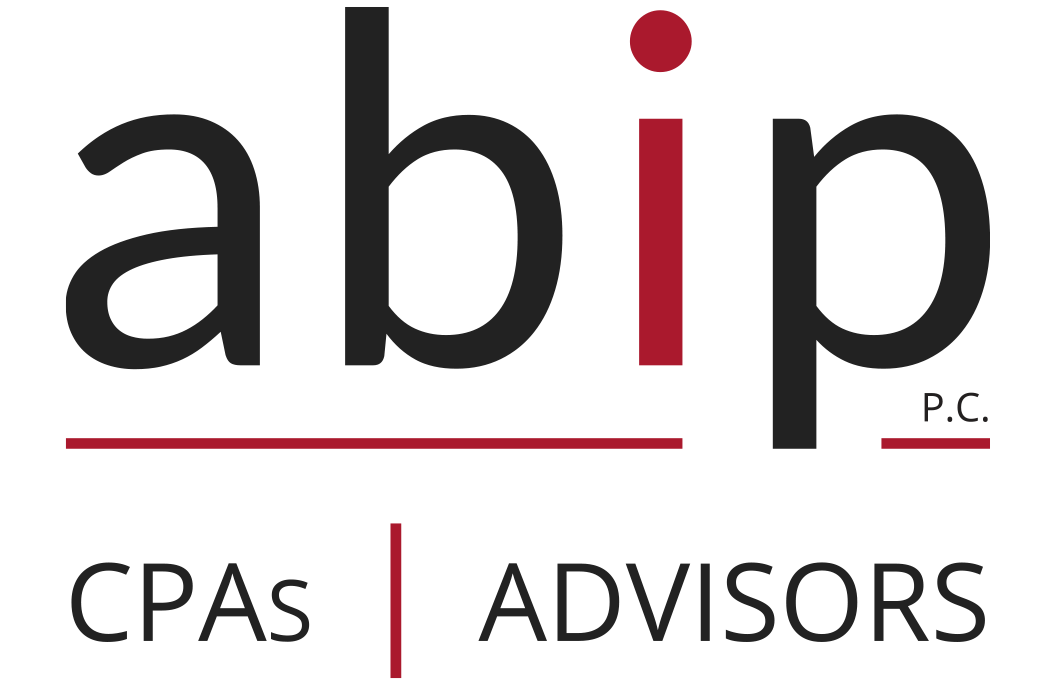Tax Changes Regarding COLAs for 2014
Our fourth part of the IRS 2014 Tax Changes series is dedicated to the changes regarding the Cost of Living Allowance (COLA). The first 3 articles of this IRS Tax Changes series focused of Tax changes related to the Health Care Reform, to Businesses and to Individuals and Households.
22) Income tax brackets receive the usual minor adjustment.
These income thresholds define the 2014 federal income tax brackets. 19
23) The individual estate tax exemption rises to $5.34 million.
It was $5.25 million in 2013. Any unused portion of the $5.34 million individual exemption may be transferred to a surviving spouse upon the death of the first deceased spouse through a timely filing of IRS Form 706.
In the big picture, the lifetime federal estate tax exemption and the lifetime federal gift tax exemption are unified, so an individual can also elect to use some or all of a $5.25 million individual exemption on gifts made during his or her lifetime (though that will lower the amount of his or her estate that may be excluded from inheritance taxes).
Incidentally, the annual gift tax exclusion amount remains at $14,000 this year. 20
24) The standard deduction is slightly greater.
Here are the amounts for 2014. 19
| Single filers, married filing separately | $6,200 (up $100 from 2013) |
| Head of household | $9,100 (up $150 from 2013) |
| Married filing jointly/qualifying survivor | $12,400 (up $200 from 2013) |
25 – The personal exemption rises by $50.
In 2013, it was $3,900; in 2014, it is $3,950. Here are the 2014 phase-out ranges…19, 21
| Single filers, married filing separately | $254,200-$376,700 |
| Head of household | $279,650-$402,150 |
| Married filing jointly/qualifying survivor | $305,050-$427,550 |
26) The AMT exemption amount has risen for 2014.
As the Alternative Minimum Tax was at last indexed for inflation at the start of 2013, exemption amounts are set as follows:
| Single filers, married filing separately | $52,800 |
| Head of household | $41,050 |
| Married filing jointly/qualifying survivor | $82,100 |
These amounts are a few hundred dollars higher than in 2013. 19, 21
27) Social Security’s taxable wage base is $3,300 higher in 2014.
This year, the FICA tax rate is 6.2% on the first $117,000 of wages paid to an employee. So an employee whose 2014 wages total $117,000 will pay $7,254 to Social Security’s Old-Age, Survivors, and Disability Insurance (OASDI) program this year with the employer contributing an equivalent amount. (This tax rate is 12.4% for self-employed individuals). 22
28) Phase-outs of itemized deductions get a COLA.
The Pease limitations returned in 2013 after a 2-year absence. These are thresholds that cut into the value of most itemized deductions above a certain AGI level. Here is where the Pease limitations are set for 2014. 19, 21
| Single filers, married filing separately | $254,200 |
| Head of household | $279,650 |
| Married filing jointly/qualifying survivor | $305,050 |
29) Phase-out ranges for the above-the-line student loan interest deduction have been adjusted.
The deduction limit remains at $2,500 this year; the phase-out ranges are $5,000 north of where they were in 2013. 17
| Single filers, Head of household | $65,000-80,000 |
| Married filing jointly/qualifying survivor | $130,000-160,000 |
30) Earned Income Tax Credit limits rise.
This tax break is designed to help low-wage filers. The credit varies based on a) your taxable income, b) the number of dependents you support. For 2014, you are eligible to receive it providing your earned income and your AGI each fall below the following limits:
$46,997 ($52,427 married filing jointly) with 3 or more qualifying children
$43,756 ($49,186 married filing jointly) with 2 qualifying children
$38,511 ($43,941 married filing jointly) with 1 qualifying child
$14,590 ($20,020 married filing jointly) with no qualifying children
The corresponding EITC for TY 2014:
$6,143 with 3 or more qualifying children
$5,460 with 2 qualifying children
$3,305 with 1 qualifying child
$496 with no qualifying children
If you have investment income exceeding $3,350 for 2014, you can’t qualify for the EITC. 23
31) Some minor COLAs affect traditional & Roth IRA contributions.
 While the amount you can contribute to a single traditional or Roth IRA or across multiple IRAs in 2014 is unchanged from last year – $5,500, $6,500 for those 50 and older – some other changes have occurred pertaining to the ability to contribute to a Roth or take a tax deduction from a “regular” IRA.
While the amount you can contribute to a single traditional or Roth IRA or across multiple IRAs in 2014 is unchanged from last year – $5,500, $6,500 for those 50 and older – some other changes have occurred pertaining to the ability to contribute to a Roth or take a tax deduction from a “regular” IRA.
Phase-out ranges affecting the tax deduction for traditional IRA contributions (AGI).
Single or head of household, contributing to workplace retirement plan & traditional IRA $60,000-70,000
Married couple both contributing to workplace retirement plan & traditional IRA $96,000-116,000
Married individual contributing to traditional IRA, spouse in workplace retirement plan $181,000-191,000
These phase-out ranges are $3,000 higher for investors who don’t have a workplace retirement plan but are married to someone who does, and $1,000 higher for the others. 24
Phase-out ranges affecting the chance to make a Roth IRA contribution (AGI).
| Single or Head of household | $114,000-129,000 |
| Married couples | $181,000-191,000 |
These phase-out ranges have increased by $2,000 for single filers and by $3,000 for couples. 24
32) New COLAs pertaining to SEPs, ESOPs, top-heavy plans & defined contribution plans.
Slight 2014 adjustments have been made to some thresholds for these plans. 25
| SEPs | Maximum compensation of $260,000 (up $5,000 from 2013) |
| ESOPs | 5-year distribution threshold of $1,050,000 (up $15,000 from 2013) |
Additional year threshold of $210,000 (up $5,000 from 2013)
| Top-heavy plans | $ limit defining key employee rises to $170,000 (up $5,000 from 2013) |
| 415(c)(1)(a) plans | Maximum annual benefit of $52,000 (up $1,000 from 2013) |
(defined contribution plans)
33) Saver’s credit thresholds are a bit higher.
The saver’s credit available to IRA and 401(k) account holders whose AGI falls underneath a certain limit, and millions of people claim it each year. It can be as large as $1,000 for single filers and as large as $2,000 for married couples. For 2014, the AGI limits for claiming the saver’s credit are:
| Single filers, married filing separately | = $30,000 (up $500 from 2013) |
| Head of household | = $45,000 (up $750 from 2013) |
| Married filing jointly/qualifying survivor | = $60,000 (up $1,000 from 2013) |
Saver’s credits seldom approach the $1,000/$2,000 maximums, but they are certainly welcomed by low-income and moderate-income pre-retirees. 24
34) The adoption tax credit has increased.
This very large credit is available to anyone who adopts a child under 18 years of age or a physically or mentally disabled child of any age. The child can be a U.S. citizen, a “resident alien,” or a “nonresident alien” as defined by the IRS. To claim the credit, you must demonstrate personal expenses as part of the adoption process (but see the exception below). The credit is commonly claimed by families in the year an adoption is finalized.
In 2014, the adoption tax credit is $13,190 per child, up from $12,970 last year. While the credit is subject to phase-outs (the MAGI phase-out range for 2014 is $197,880-237,880), any family that adopts a special needs child (as defined in the IRC) will qualify for the full amount of the credit even if no personal expenses are incurred in doing so. 26
35) Retirement earnings test amounts for Social Security have risen.
If you receive Social Security benefits and you will be younger than full retirement age at the end of 2014, $1 of your benefits will be withheld for every $2 that you earn above $15,480 (a $360 increase from 2013).
If you receive Social Security benefits and reach full retirement age during 2014, $1 of your benefits will be withheld for every $3 that you earn above $41,400 – but that restriction applies only to earnings in the months prior to attaining full retirement age. (The applicable 2014 limit was $40,080.) There is no limit on earnings starting the month an individual attains full retirement age.
Will some of your Social Security income be taxable this year? That depends on your “combined income,” which Social Security calculates using this formula:
Adjusted gross income + non-taxable interest + 50% of Social Security benefits = combined income
If your combined income is between the following amounts, you may have to pay federal income tax on up to 50% of your benefits:
| Single filers (“individuals”) | $25,000-34,000 |
| Joint filers | $32,000-44,000 |
If it exceeds the following amounts, you may have to pay federal income tax on up to 85% of your benefits:
| Single filers (“individuals”) | $34,000 |
| Joint filers | $44,000 |
Marrieds who file separately will “probably” have their Social Security benefits taxed, according to the program’s website. The above dollar thresholds have never been inflation-indexed. 27, 28
If you have any questions concerning any of these tax changes made by the IRS, contact ABIP today! One of our tax experts will be able to assist you.
This Special Report is not intended as a guide for the preparation of tax returns. The information contained herein is general in nature and is not intended to be, and should not be construed as, legal, accounting or tax advice or opinion. No information herein was intended or written to be used by readers for the purpose of avoiding penalties that may be imposed under the Internal Revenue Code or applicable state or local tax law provisions. Readers are cautioned that this material may not be applicable to, or suitable for, their specific circumstances or needs, and may require consideration of non-tax and other tax factors if any action is to be contemplated. Readers are encouraged to consult with professional advisors for advice concerning specific matters before making any decision. Both ABIP and MarketingLibrary.Net, Inc. disclaims any responsibility for positions taken by taxpayers in their individual cases or for any misunderstanding on the part of readers. Neither ABIP nor MarketingLibrary.Net, Inc. assume any obligation to inform readers of any changes in tax laws or other factors that could affect the information contained herein.
17. “Changes for 2013/2014 Tax Year”
19. “IRS Announces 2014 Tax Brackets, Standard Deduction Amounts And More”
20. Bell, Kay. “Estate tax and gift tax amounts”
22. “Preview of 2014 EITC Income Limits, Maximum Credit Amounts and Tax Law Updates”
23. “Modest 401(k) and IRA Changes Coming in 2014”
24. “IRS Announces 2014 Pension Plan Limitations; Taxpayers May Contribute up to $17,500 to their 401(k) plans in 2014”
25. Demaray, Mark. “Adoption Tax Credit for 2014”
26. “Exempt Amounts Under The Earnings Test”
27. “Benefits Planner: Income Taxes And Your Social Security Benefits”






